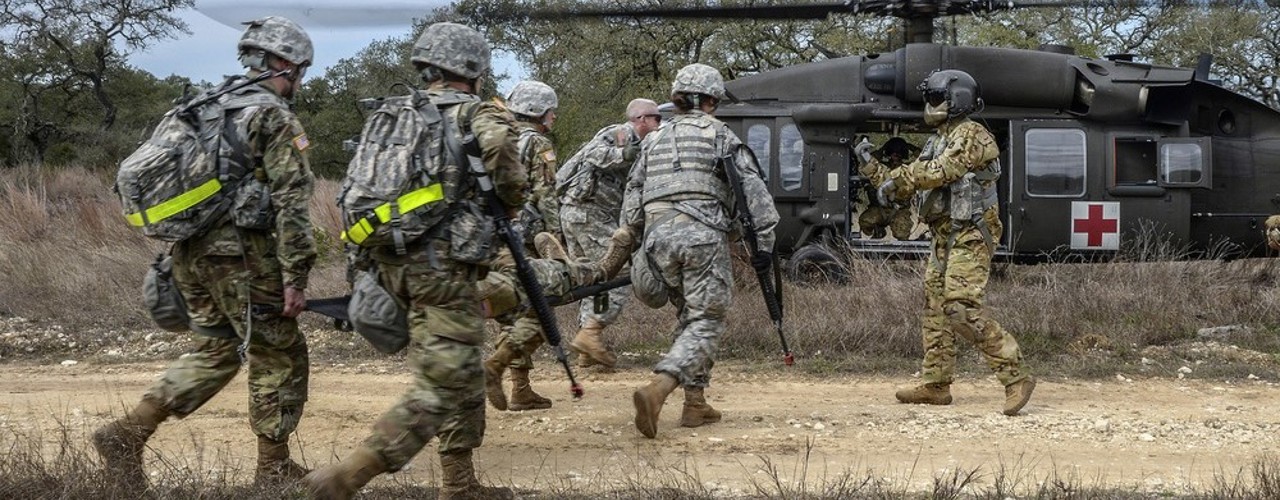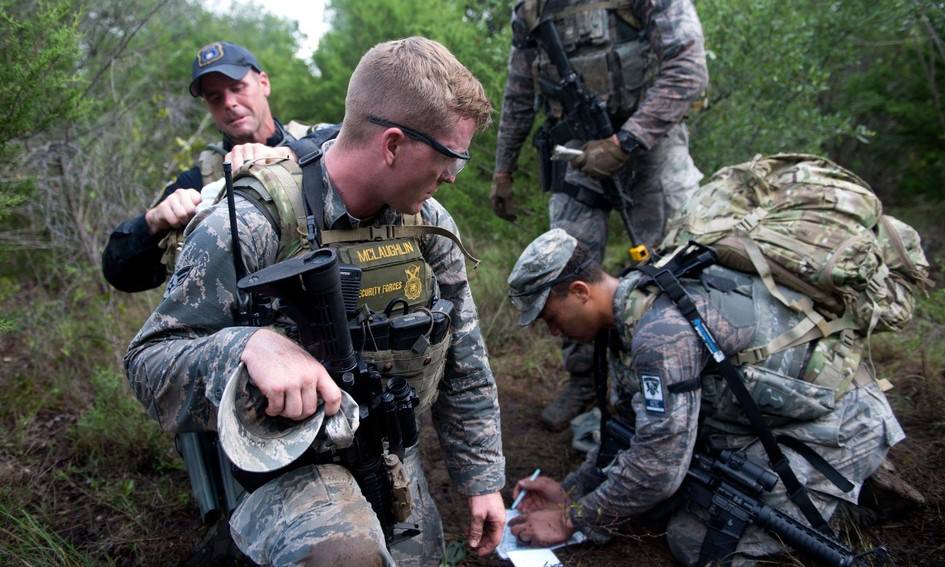

New Sentinel Landscapes to Strengthen Military Readiness, Address Climate Change and Other Natural Resource Challenges
The Sentinel Landscapes Partnership, comprised of the U.S. Department of Agriculture (USDA), Department of Defense (DoD) and Department of Interior (DOI) announced three new areas designated as sentinel landscapes, where natural and working lands thrive alongside military installations and ranges. These landscapes play a key role in strengthening the nation’s military readiness while addressing natural resources concerns like climate change and contributing to the America the Beautiful initiative.
The three new sentinel landscapes are the Camp Bullis Sentinel Landscape in Texas, Northwest Florida Sentinel Landscape and Southern Indiana Sentinel Landscape.
“These new sentinel landscapes are a testament to the power of collaboration and partnership,” said USDA’s Natural Resources Conservation Service Chief Terry Cosby. “By using USDA's conservation programs to protect and enhance farmland, rangeland, forestland and grasslands around military installations, we can invest in critical water resources and wildlife habitat on working lands and support climate-smart agriculture, while also advancing military training and testing opportunities.”
“The USDA Forest Service is proud to partner with the Sentinel Landscapes Partnership,” said Forest Service Chief Randy Moore. “We are committed to investing in this collaborative conservation effort with our fellow federal partners in the spirit of shared stewardship. The Sentinel Landscapes Partnership provides a great opportunity to support military readiness while securing conservation benefits for communities.”
“DoD is proud to support the growth of the Sentinel Landscapes Partnership and add Camp Bullis, Northwest Florida, and Southern Indiana to the list of designated sentinel landscapes,” said Deputy Assistant Secretary of Defense for Real Property Ron Tickle. “These new landscape designations will leverage DoD funding and programs to protect the missions at 14 key DoD installations and ranges, protecting essential testing and training operations, enhancing resilience to climate change, and preserving our nation’s natural resources and working lands.”
“The Service is a proud partner in this Sentinel Landscapes effort,” said Martha Williams, U.S. Fish and Wildlife Service Principal Deputy Director. "Programs like the Sentinel Landscapes are shining examples of what the Biden Administration’s America the Beautiful initiative can achieve through collaborative locally-led conservation efforts. Working together our diverse federal, state and local partners can improve vital landscapes, wildlife habitat and natural resources that benefit all Americans.”
About the New Sentinel Landscapes
The Camp Bullis Sentinel Landscape, based in the Texas Hill Country where the Texas A&M Natural Resources Institute leads conservation research and military preparedness initiatives, encompasses ranch lands, spring-fed creeks, local and state parks and one of the fastest-growing regions in the country. Joint Base San Antonio’s Camp Bullis provides training opportunities for 266 mission partners, supporting all DoD enlisted and officer medical training, military intelligence, special forces, pre-deployment, national and international training requirements. The landscape boundary contains the Edwards and Trinity Aquifers that Camp Bullis, San Antonio and the surrounding communities depend on for clean drinking water. Partners are focused on building community and installation resilience to drought, flood and wildfire; improving water quality and quantity; maintaining and improving agricultural productivity; increasing the viability of threatened, endangered and at-risk species; and expanding access to public recreation opportunities.
The Northwest Florida Sentinel Landscape contains rural and agricultural lands, iconic longleaf pine forests, threatened and endangered species habitat and nine key DoD facilities, which are integral to U.S. Air Force training, weapons testing and special operations and also provide initial training to all Navy, Marine Corps and Coast Guard aviators. Partners will focus on addressing resilience and sustainability challenges; retain working agriculture and forest lands as compatible, resilient and sustainable land uses; increase the resilience and sustainability of natural systems by conserving and restoring habitat and water resources; and identify, implement and accelerate projects that mitigate coastal risks and increase the climate resilience of military installations and the landscapes that overlap mission footprints.
The Southern Indiana Sentinel Landscape is anchored by four critical DoD installations and ranges that provide a variety of testing and training opportunities for the Army, Navy, Air Force, Marine Corps, National Guard, as well as federal and state partners. This vast landscape also contains six state parks, seven state forests, nine state fish and wildlife areas, 39 state-dedicated nature preserves, one National Forest and three National Wildlife Refuges. With the primary objective of preserving and protecting military mission readiness, operations, testing and training capabilities, the Southern Indiana Sentinel Landscape partners will also promote and support agricultural and working lands; provide for watershed and riparian corridor protections by promoting landscape resiliency; sustain and restore forest lands through sustainable land management and protections; and ensure endangered, threatened and at-risk species protection through habitat preservation and restoration.
More about Sentinel Landscapes
USDA, DoD and DOI define sentinel landscapes as areas in which natural and working lands are well suited to protect defense facilities from land use that is incompatible with the military's mission.
Once the partnership designates a location as a sentinel landscape, USDA, DoD and DOI work with local partners to support private landowners in accessing the resources necessary to carry out sustainable management practices on their properties. Sustainable management practices, such as farming, ranching and forestry not only offer economic and ecological benefits but also protect defense facilities from incompatible development that can constrain the military's ability to carry out training and testing activities.
Sentinel landscapes accomplish their objectives by connecting private landowners with voluntary state and federal assistance programs that provide agricultural loans, disaster relief, educational opportunities, financial and technical assistance and funding for conservation easements.
Since 2013, sentinel landscapes have worked with private landowners to permanently protect over 515,000 acres and implement sustainable management practices on an additional 2.7 million acres around military testing and training areas. These efforts have preserved wildlife habitat, bolstered agricultural and forest production and reduced land use conflicts around military bases.
Since 2013, sentinel landscapes have worked with private landowners to permanently protect over 515,000 acres and implement sustainable management practices on an additional 2.7 million acres around military testing and training areas. These efforts have preserved wildlife habitat, bolstered agricultural and forest production and reduced land use conflicts around military bases. For more information about sentinel landscapes visit sentinellandscapes.org.
A touches the lives of all Americans each day in so many positive ways. Under the Biden-Harris Administration, USDA is transforming America’s food system with a greater focus on more resilient local and regional food production, fairer markets for all producers, ensuring access to safe, healthy and nutritious food in all communities, building new markets and streams of income for farmers and producers using climate-smart food and forestry practices, making historic investments in infrastructure and clean energy capabilities in rural America, and committing to equity across the Department by removing systemic barriers and building a workforce more representative of America. To learn more, visit usda.gov.
Learn More
Sentinel Landscapes
Conserving land and natural resources, while protecting military training and testing spaces


 The Camp Bullis Sentinel Landscape is defined by its unique surface and groundwater resources.
The Camp Bullis Sentinel Landscape is defined by its unique surface and groundwater resources.




